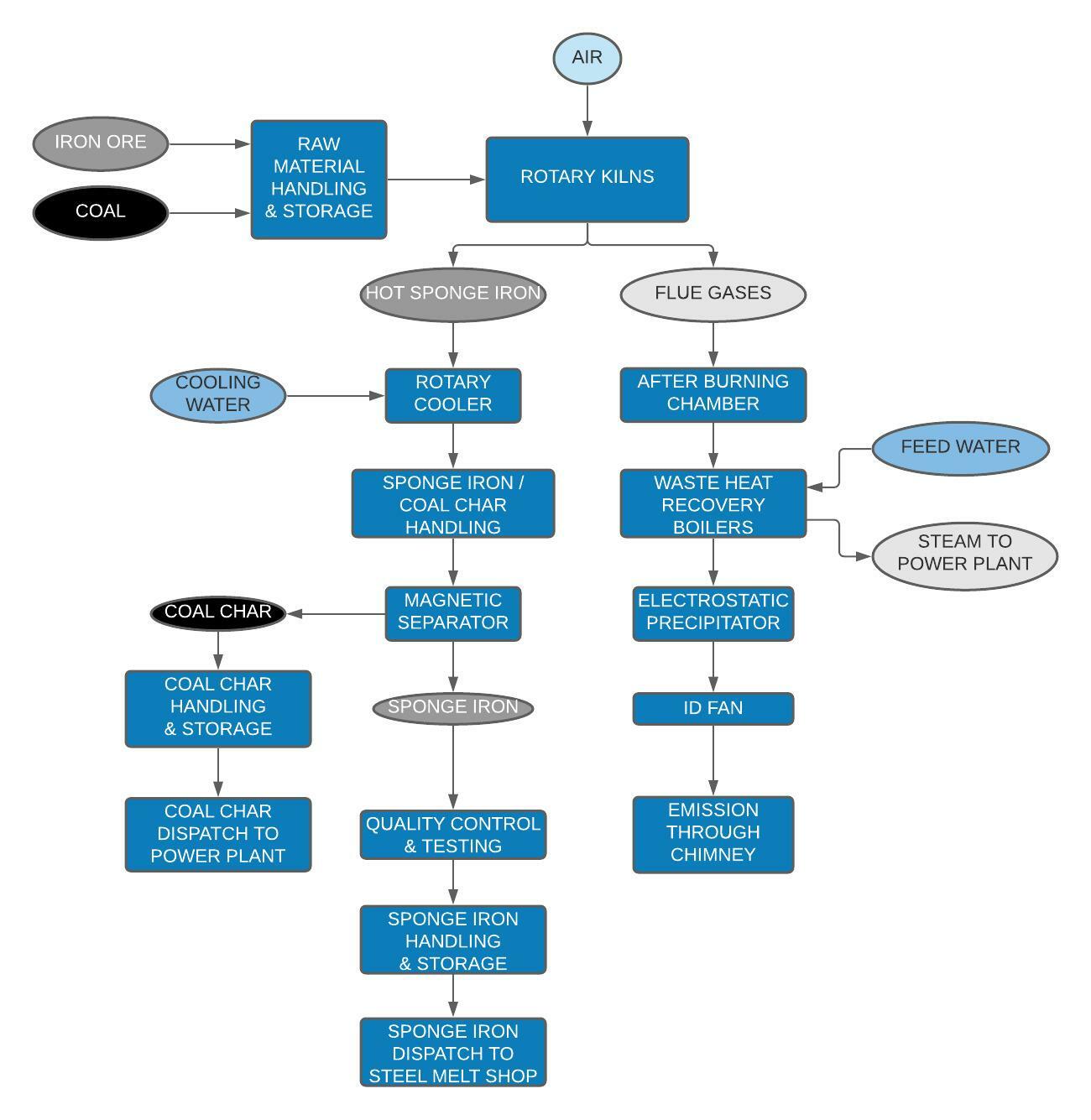
SEIL's two 350 TPD CODIR Process DRI Sponge Iron Kilns were setup in a technical collaboration with the erstwhile Mannesmann Demag Corporation of Germany (currently Primetals Technologies, a Mitsubishi Heavy Industries group company). The company is able to manufacture 0.225 MTPA of Sponge Iron per annum.
Each Rotary Kiln is 70 meters long, 4.4 meters wide and inclined at 2.5%. The kilns each have a thick 250mm refractory lining inside, 3 support rollers and a dual drive with two 155 kW DC Motors. Each Kiln also has seven shell air fans and air tubes for air supply inside the kiln.
Raw Materials
Iron Ore, one of the primary raw materials for the production of Sponge Iron, is procured as lumps or DRI grade pellets mostly from NMDC which arrives at the ISP by way of railway rakes.
Another crucial raw material, Coal, is procured both domestically and imported. Coal procurement is done based on enhancing productivity at optimal cost, improvement of product quality and kiln campaign life. Domestic coal is procured mostly from Coal PSUs which arrives at the ISP by way of railway rakes. Imported Coal from Indonesia and South Africa first lands at the Visakhapatnam Port and then transported to the ISP.
Dolomite acts as a de-sulphuriser to remove sulphur from the feed mix during the reduction process. Control of sulphur content is an essential pre-requisite for the manufacture of good quality steel. Dolomite is procured for domestic suppliers.
Process
The raw materials are prepared as per the requirement and stored in separate storage bins. The required quantity and proportion of Iron Ore and Coal are drawn with the help of weigh feeders and fed on to a separate conveyor. They enter the rotary kilns through a feed chute and are initially pre-heated with the liberation of heat from the volatiles from the coal in the first 1/3rd of the kiln. The reduction process begins after this where the iron oxides are reduced to metallic iron. The following chemical reactions take place inside the kiln.
C + O2 = CO2
CO2 + C = 2CO
3Fe2O3 + CO = 2Fe3O4+CO2
Fe3O4 + CO = 3FeO + CO2
FeO + CO = Fe + CO2
Sponge Iron and Coal Char are discharged from the kiln through a 12 meters long rotary cooler where water is sprayed directly as well as indirectly for cooling the material down to 100oC. The material is then fed to magnetic separator for separating the Sponge Iron and non-magnetic coal char after which the Sponge Iron is transported by way of conveyor to the Storage Silos.
Waste Heat Recovery Boilers (WHRBs)
When the material travels downward in the kiln, hot gases travel in the opposite direction. These hot gases are utilized to generate power through WHRBs. The hot gases first enter into the dust settling chamber, where the heavier particles settle down. The gases then enter into an after burning chamber, where air is supplied to burn CO, if present, to CO2. After this the gases enter the WHRB and then the Economizer. Here, the gases cool down to below 180oC. The gases finally pass through an Electro Static Precipitator (ESP) for elimination of dust particles and emitted through chimney and ID Fan.
DRI Sponge Iron Kilns - Process Flow Chart


